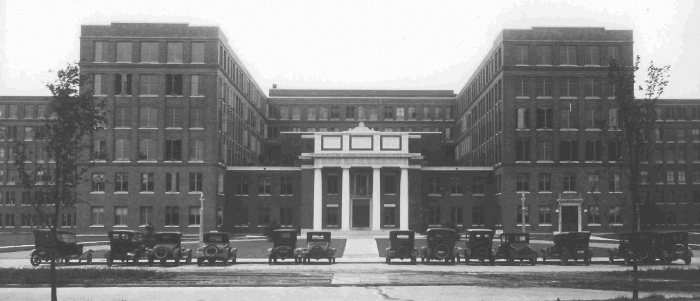Small experiments studying the effects of radioactive isotopes, including plutonium, uranium, and polonium, on humans were conducted in the Manhattan Annex of the Strong Memorial Hospital located at the University of Rochester. The purpose of these studies was to examine the safety of small amounts of radiation on those working at other Manhattan Project sites. At the request of the Manhattan Engineer District, the small ward studying the metabolic effects of radioactive materials was established across the street from the university’s medical school. Accessible only by underground tunnel, the Manhattan Annex was guarded with strict scrutiny, as were all other sites administered by the Manhattan Project and subsequently, the United States Atomic Energy Commission. Construction on the wing lasted only five months, and by the end of the Second World War, the Manhattan Annex employed about 350 people.
Most of the research conducted at the University of Rochester took place after the end of the Second World War. From 1943 to 1947, eleven hospital patients were injected with plutonium, six were injected with uranium salts, and five patients were given doses of polonium. Research continued well into the 1950s and 1960s with testing on lead poisoning in which five patients were administered doses of lead isotopes.




